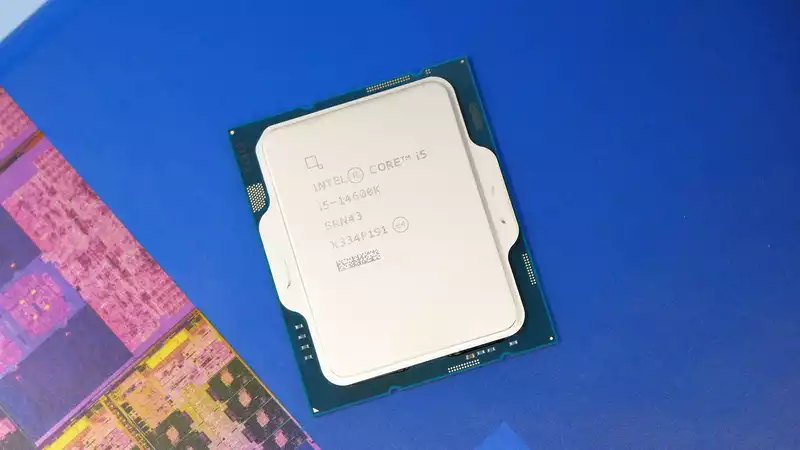The K-series Core i5 is easily the most recommendable of Intel's new generation. But what about the Core i5 14600K? On the one hand, this new chip is several frames faster than its successor, the Core i5 13600K, and is very competitive against AMD's midrange. On the other hand, it is a bit more expensive than the 13600K, and paying extra for something nearly identical doesn't feel very good. Nevertheless, this is mainly due to the fact that the older chips are discounted at the time of shipping.
There is little difference between the Core 14600K and 13600K because Intel has decided that the 14th generation will use the Raptor Lake architecture, which is nearly identical to the 13th generation. This includes the launch price, which remains $329.
However, a year after market launch, the 13600K was no longer available at Intel's customer recommended price. I found it for as low as $310. Not a lot of extra money to pay for something new. But when there is little to be gained by spending that money, i.e., saving it for a better GPU or faster RAM, I begin to wonder.
The Core i5 14600K has six performance cores (P-cores) and eight efficient cores (E-cores). A total of 14 cores and 20 threads are available, with 24 MB of L3 (smart) cache, 20 MB of L2-2MB in each P-core and 4 MB of L2-2MB in each of the two E-core clusters, exactly matching the 13600K.
However, the 14600K is slightly faster than its predecessor. The overall maximum clock speed is the same as the 13600K, 5.3 GHz Max Boost, but the P core is up to 200 MHz faster and the E core is 100 MHz faster.
In most cases, these higher clock speeds only provide a slight increase in frame rate over the 13600K. On average, they are one to two frames. However, there are still some games, such as F1 2021, where 14600K does not benefit from the minuscule faster clocks at all.
Even one or two frames is within a reasonable test variance; the only obvious reason the 14600K has any advantage over its predecessor is that it is fairly consistently ahead in multiple runs and multiple benchmarks.
In synthetic benchmarks, there is even less to report from my tests; the Core i5 14600K holds a makeshift lead over the 13600K, but this is not a serious real-world advantage. Also, the 14600K's power consumption is slightly higher. Peak wattage during testing was about 10W higher.
Considering all the benchmarks, it doesn't really seem worth paying any extra for the 14600K over Intel's 13th generation. More interesting is the battle between the 14600K and AMD's lineup: the $395 Ryzen 7 7800X3D has 3D V-Cache, which can improve frame rates in games where having cache on hand is more advantageous.
In the games I used for benchmarking, the 14600K and 7800X3D are in a dead heat. Each chip has three titles. But when AMD's 3D V-Cache works, it works great. For example, the F1 2021. when AMD's 3D V-Cache works really well, it is clear that there is a lot to be gained from AMD's 3D V-Cache, but AMD's chips start out quite expensive to have it on them.
As for the 7700, this chip is not as good as the 14600K for the same amount of money. However, Ryzen has a huge advantage in the aforementioned F1 2021. Regardless, I would rule out this chip.
In synthetic performance benchmarks, it is the overall high core count and strong P-core performance that helps Intel maintain its lead; in Cinebench R23, Intel's mid-range chips outperform AMD, and in encoding and rendering benchmarks also show the 14th generation chips leading.
The downside of the 14600K is that it consumes more power than AMD's Ryzen 7, consuming twice as many watts at peak load.
Intel offers the advantage of a less expensive upgrade for builders who already have LGA 1700 motherboards. The 14th generation is compatible with 600 or 700 series motherboards and is the third generation chip to use the same socket; as noted in our Core i9 14900K review, upgrading a CPU from a 12th generation chip to a 14th generation chip is probably not that common, especially moving laterally from Core i5 to Core i5 is easy.
I expect this race to go to Intel's Core i5 14600K; AMD can claim high-end gaming dominance, but its midrange and budget chips are often less valuable than Intel's. However, if you are in pursuit of the most affordable chip, the 13600K of the previous generation will still be the best value. At least as long as they are in stock.
.

Comments